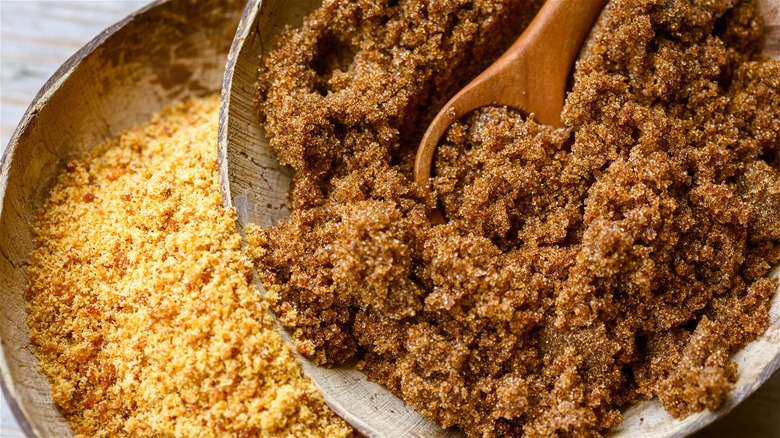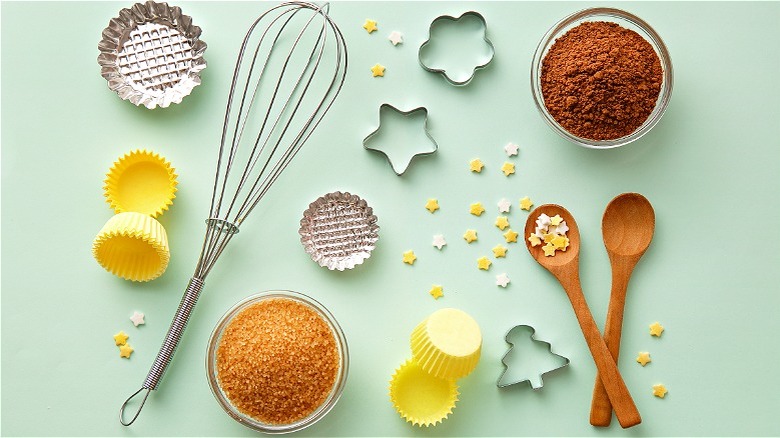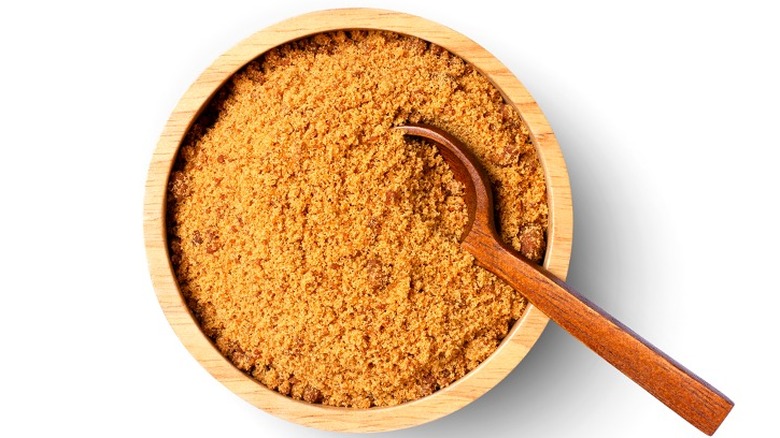The Biggest Difference Between Light And Dark Brown Sugar
Whether you're making your favorite chocolate chip cookies, nut-filled muffins, or basic barbecue sauce, brown sugar often serves as a necessary ingredient. Compared to white sugar, which is a crystallized substance made from sugar cane or sugar beets, brown sugar is practically the same product but with added molasses for a softer and more distinct flavor and texture. Molasses is the residual syrup produced when sugar cane is boiled down into sugar crystals, and molasses is then removed when making white sugar. So, now that you know the difference between white and brown sugar, what's the difference between light and dark brown sugar?
The primary factor separating these two varieties lies in exactly how much molasses is used in each. Light brown sugar has less molasses and ultimately less moisture coming from this naturally occurring byproduct. Dark brown sugar has a deeper concentration of molasses, so it's more distinct in flavor, denoting a richly developed caramel essence. You may be wondering, though, if light and dark brown sugar are interchangeable in your most coveted recipes. Will you see a considerable difference if you substitute light for dark or vice versa?
Light and dark brown sugar in recipes
If your weekend breakfast menu includes homemade sticky buns, does the type of brown sugar you use for that luscious caramel topping truly matter? While a lot of recipes can use either variety, you ultimately just need to make a judgment call based on the specific recipe you're following.
Dark brown sugar contains more molasses, which means a higher level of acid and a softer feel due to excess moisture. Yet, the moisture-differences between light and dark are barely noticeable, so in most cases, which variety you choose comes down to personal preference. The only food where variety more or less matters is cookies: Since dark brown sugar has a higher acidity than light, it can cause the baking soda in your recipe to react, which may force your cookies to rise more during their designated baking time.
However, the overall differences are moderate at most. All in all, expect a stronger caramel-like flavor and a more pronounced color in your dishes when using dark brown sugar. If you don't want to trouble yourself by keeping multiple varieties of it in your pantry, though, you can actually make your own version right at home and, depending on the recipe, adjust the amount of molasses accordingly.
How to make light and dark brown sugar
Since you already know how brown sugar is commercially made, you can probably guess that all you need to make this toffee-flavored mainstay in your own kitchen are white sugar and molasses. The great part about making brown sugar at home is that you can easily add more molasses if you're following a recipe that specifically calls for dark brown sugar. If not specified, know that most recipes containing brown sugar use the lighter variety as a baseline, because light brown sugar has a more nuanced color and flavor.
To make light brown sugar, mix 1 cup of white sugar with 1 tablespoon of molasses. Alternatively, if you need dark brown sugar, simply mix 2 tablespoons of molasses into 1 cup of white sugar. The best part about making your own mix is how adjustable and easy it is to make either variety. Just be sure to stash your newly made brown sugar in a covered container or plastic storage bag. You can also keep brown sugar soft with one equally sweet ingredient.


